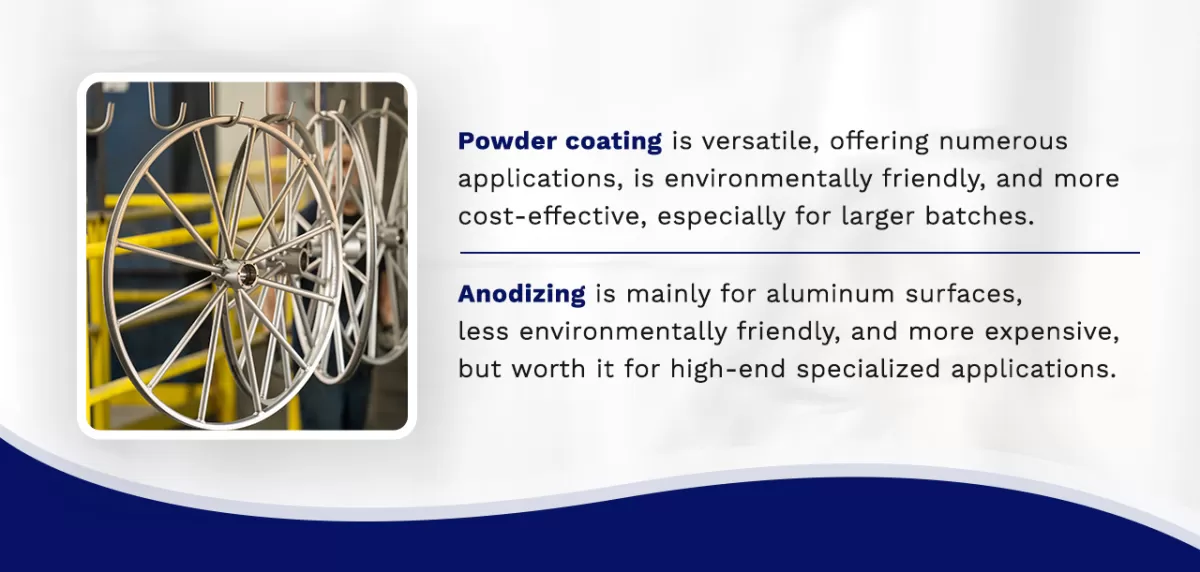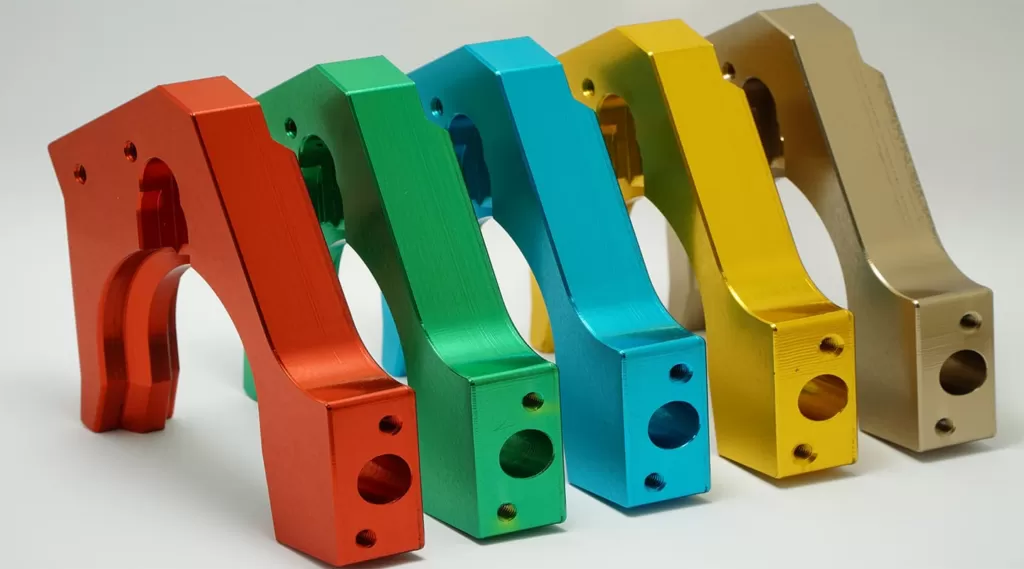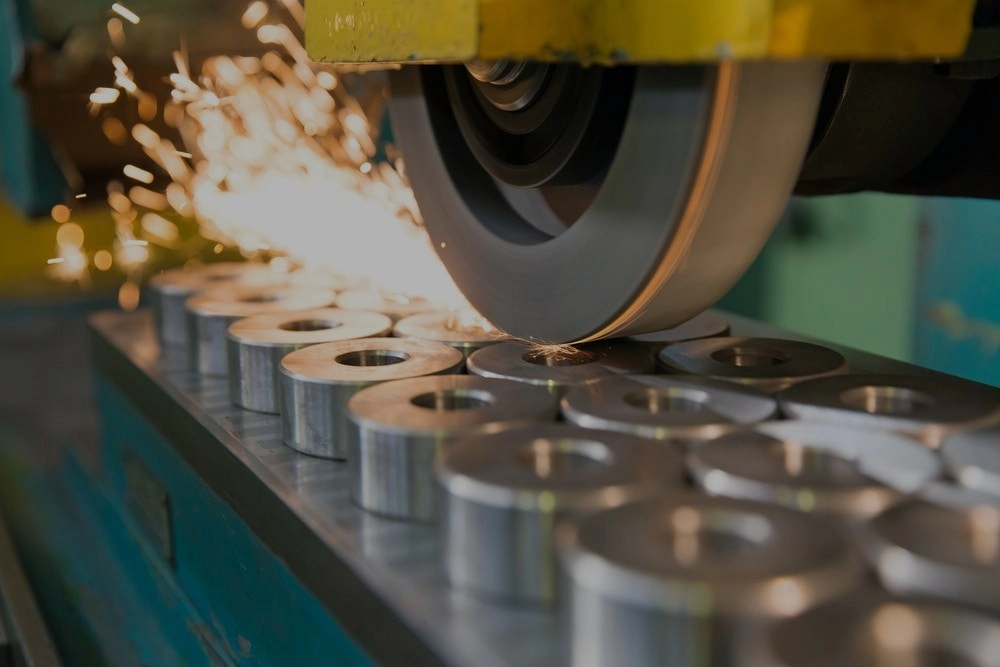Understanding Powder Coating and Anodizing
When working with metals, especially for CNC machining projects, choosing the right surface finish is crucial. Two popular options are powder coating and anodizing. Both enhance the durability and appearance of metal parts but do so in different ways. Understanding these methods will help you make informed decisions for your projects.
What is Powder Coating
Powder coating is a finishing process where dry, powdered paint is applied electrostatically to a metal surface. The coated part is then cured in an oven, which melts the powder, forming a hard, colorful, and protective layer. This finish is known for its durability and resistance to chips, scratches, and fading.
Process Overview of Powder Coating
- Preparation: The metal surface is cleaned and pre-treated to improve adhesion.
- Application: Powder particles are sprayed using an electrostatic gun, which charges the powder for uniform coverage.
- Curing: The coated metal is heated in an oven, causing the powder to melt and solidify into a smooth, hard finish.
Common Applications of Powder Coating
Powder coating is widely used in automotive parts, appliances, outdoor furniture, and industrial equipment—basically, wherever a tough, colorful finish is needed.
What is Anodizing
Anodizing is an electrochemical process that thickens the natural oxide layer on aluminum or other metals. This oxide layer improves corrosion resistance and wear performance while allowing for a range of color options through dyeing.
Process Overview of Anodizing
- Cleaning: The metal is thoroughly cleaned and degreased.
- Electrochemical Treatment: The part is submerged in an acid bath and connected to an electrical circuit, forming an oxide layer on the surface.
- Sealing: The pores in the oxide layer are sealed to enhance protection and color retention if dyeing is applied.
Common Applications of Anodizing
Anodizing is commonly used for aluminum parts in aerospace, electronics, architectural components, and consumer goods, especially where corrosion resistance and a natural metal look are priorities.
Why Compare Powder Coating and Anodizing
Both powder coating and anodizing are excellent surface finishing methods with unique benefits. Comparing them helps determine which is best suited for your CNC metal finishing needs depending on factors like material, durability requirements, aesthetics, and budget. At HYCNC, we guide you through these options to find the perfect finish for your project.
Key Differences Between Powder Coating and Anodizing
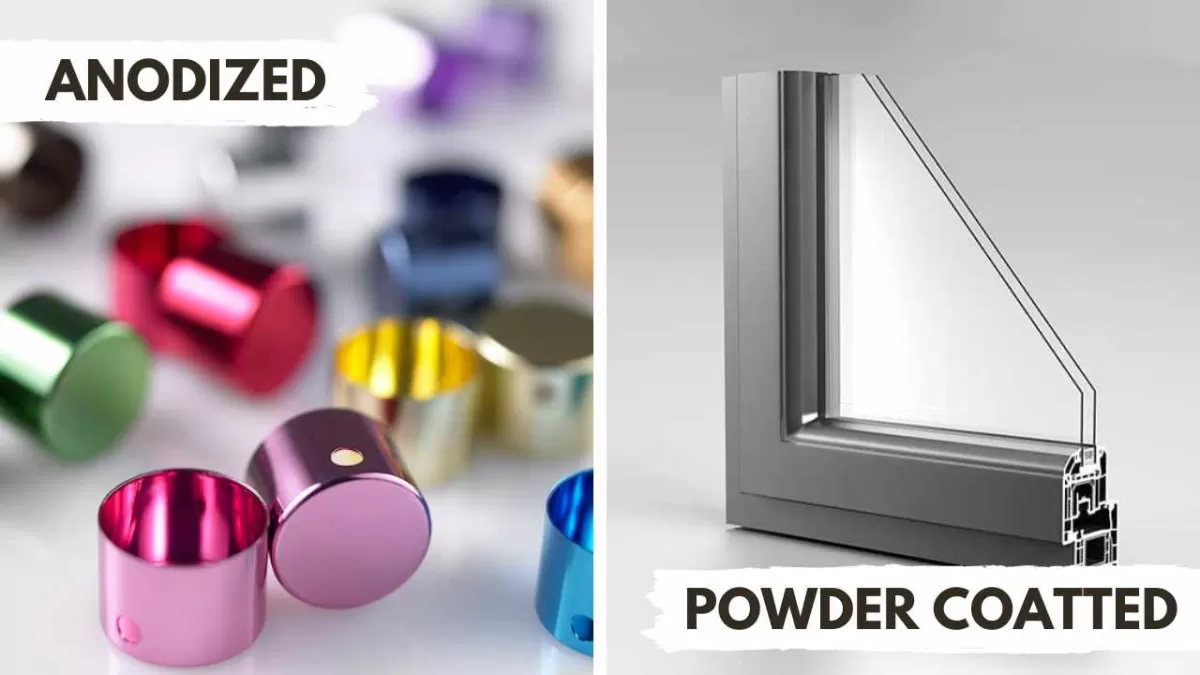
When it comes to choosing between powder coating and anodizing, understanding their key differences can help you decide which finish suits your project best.
Material Compatibility
- Powder Coating works on a wide range of metals including steel, aluminum, and iron. It’s great for parts that aren’t just aluminum.
- Anodizing is mostly used on aluminum and its alloys. It chemically alters the surface, so it’s limited to that metal family.
Durability and Performance
- Powder Coating creates a thick, hard layer that resists chipping, scratching, and weather damage. It’s ideal for outdoor use and harsh environments.
- Anodizing forms a thin oxide layer that’s very hard and corrosion-resistant. It’s excellent for wear resistance but less impact-resistant than powder coating.
Aesthetic Options
- Powder Coating offers a wide range of colors and finishes – from glossy to textured. You can customize the look pretty freely.
- Anodizing gives a natural metallic finish with subtle color options like bronze, black, or clear. The look is more understated and durable.
Cost Considerations
- Powder Coating generally costs less upfront, especially for large batches or thicker coatings. It also allows for quick color changes without extra processing.
- Anodizing can be pricier due to its chemical process and surface prep requirements. However, it can lower maintenance costs over time thanks to its durability.
Environmental Impact
- Powder Coating is eco-friendly because it uses no solvents and produces very little waste. Overspray can be recycled, reducing environmental footprint.
- Anodizing involves hazardous chemicals and wastewater treatment to manage byproducts. Although safe when done properly, it requires more environmental controls.
Deciding between these two finishes depends on your material, budget, aesthetic preferences, and environmental priorities. For deeper insight into anodizing, check out our Anodizing Aluminum Explained guide.
Pros and Cons of Each Method
Pros of Powder Coating
- Durable Finish: Powder coating offers a tough, thick coating that resists chipping, scratching, and fading better than many other finishes.
- Wide Color Range: It provides vibrant color options and textured finishes, perfect for customization.
- Good Corrosion Resistance: Especially when properly applied, powder coating protects metals from rust and corrosion.
- Environmentally Friendly: It’s a low-VOC process that produces minimal waste compared to liquid paints.
Cons of Powder Coating
- Thickness Limits Detail: The thick coating can sometimes obscure fine details or sharp edges on CNC parts.
- Heat Sensitive: Not ideal for heat-sensitive materials since the curing requires high temperatures.
- Repair Challenges: Fixing damaged powder-coated parts often needs full re-coating rather than spot repairs.
Pros of Anodizing
- Superior Corrosion Resistance: Anodizing creates a hard, protective oxide layer that resists wear and corrosion extremely well.
- Enhanced Surface Hardness: It improves surface durability without adding thickness, keeping precision details intact.
- Natural Color Options: Primarily used for aluminum, anodizing offers natural metallic shades and accepts dyes for custom colors.
- UV Stable: The finish doesn’t fade under sunlight, making it great for outdoor applications.
Cons of Anodizing
- Limited Color Choices: Although dyes are possible, the palette is narrower compared to powder coating.
- Material Specific: Mainly suitable for aluminum and certain other metals, limiting its use on diverse materials.
- Cost: The process can be pricier and more complex depending on the anodizing type and thickness required.
Both powder coating and anodizing have their strengths and weaknesses. Picking the right one depends on your project’s materials, aesthetics, and durability needs. For more details about anodizing, check out our guide on anodizing aluminum and how it’s used.
Which Is Better for Your CNC Project
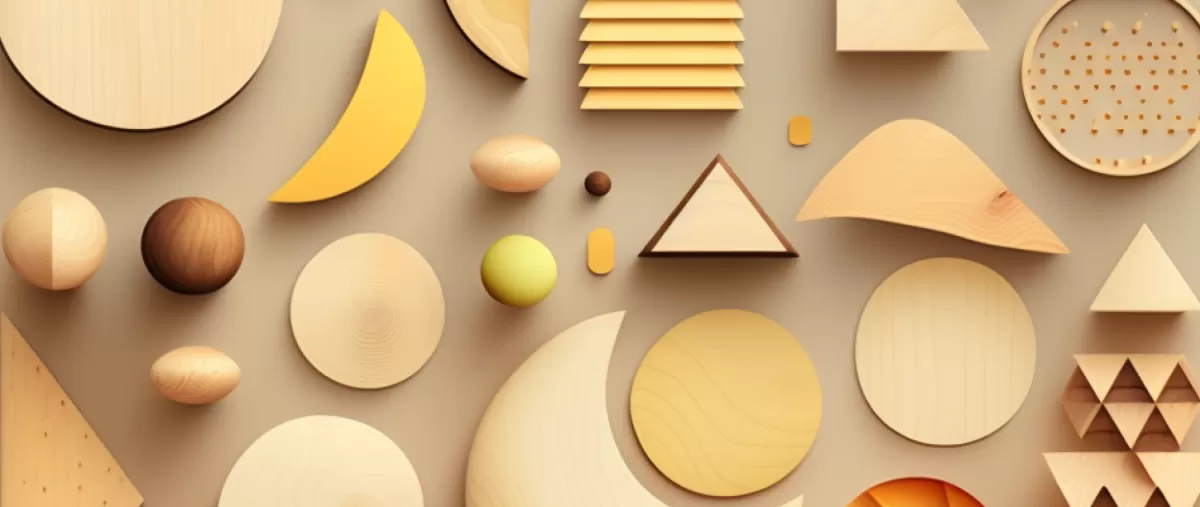
Choosing between powder coating and anodizing really depends on the specific needs of your CNC project. Here’s a quick guide to help you decide which finish fits best based on what you’re working on.
Application-Specific Recommendations
- Outdoor or Harsh Environments: Anodizing provides superior corrosion resistance, making it ideal for aluminum parts exposed to weather or chemicals.
- Vibrant Colors and Textures: Powder coating offers a wider range of colors and finishes, perfect for visible parts where aesthetics matter.
- Heavy-Duty Use: Powder coating tends to be more impact-resistant and can handle rough handling better.
- Electrical Insulation: Powder coating provides better electrical insulation compared to anodizing.
- Fine Detail Parts: Anodizing is great for preserving intricate details without adding noticeable thickness.
Case Studies and Examples
- A local engineering firm used anodizing on aluminum enclosures for outdoor electronics, resulting in long-lasting, corrosion-resistant surfaces.
- A custom furniture manufacturer chose powder coating for CNC-cut metal frames, achieving vibrant colors and durable finishes that held up well in daily use.
Decision Framework for Choosing Finish
Use this quick checklist to guide your choice:
| Criteria | Powder Coating | Anodizing |
|---|---|---|
| Material Compatibility | Best for steel, aluminum, others | Mostly aluminum |
| Durability | High impact resistance | Excellent corrosion resistance |
| Color Options | Wide variety | Limited to metallic tones |
| Thickness Added | Slightly thicker coating | Thin, minimal thickness |
| Cost | Generally lower | Slightly higher |
| Environmental Impact | Low VOC, eco-friendly | Completely eco-friendly |
Assess your project’s environment, performance needs, budget, and look preferences to pick the right finish.
At HYCNC, we help you navigate these choices with expert advice tailored to your CNC machining and finishing needs.
How HYCNC Can Help
Expertise in CNC Finishing
At HYCNC, we specialize in delivering top-notch CNC metal finishing services, including both powder coating and anodizing. With years of experience serving clients across the United States, our team understands the unique needs of your project. Whether you need durable powder coating or corrosion-resistant anodizing, we know how to get you the best results that fit your requirements and budget.
Customized Solutions
No two CNC projects are the same, and we pride ourselves on offering customized finishing solutions tailored to your specific materials and usage scenarios. From aluminum to steel and other metals, we help you choose the right surface finish to improve both appearance and performance. Our process ensures consistent coating quality and quick turnaround times, making us a trusted partner in your manufacturing and finishing workflow.
Call to Action
Ready to upgrade your CNC project with the perfect finish? Contact HYCNC today to discuss how powder coating or anodizing can enhance your parts. Our experts are here to guide you through the process, provide quotes, and deliver finishes that meet American industry standards. Get in touch with us now and see the HYCNC difference in quality and service.
FAQs about Powder Coating and Anodizing
Materials Suitable for Powder Coating and Anodizing
- Powder Coating works well on various metals like steel, aluminum, and even some plastics. It’s very popular for steel parts but also commonly used for aluminum in CNC projects.
- Anodizing is mainly for aluminum and aluminum alloys. It enhances aluminum’s surface but doesn’t work on steel or other metals.
Longevity of Powder Coating and Anodizing
- Powder Coating offers strong protection against chipping, scratching, and fading. With proper care, it can last 10 years or more outdoors.
- Anodizing is extremely durable and corrosion-resistant, often lasting 20 years or longer, especially in harsh environments.
Environmental Friendliness
- Powder Coating is eco-friendly because it produces almost no volatile organic compounds (VOCs) and excess powder can be recycled.
- Anodizing is clean in terms of chemical use but can involve some wastewater treatment. Still, it’s considered environmentally responsible compared to traditional painting.
Combining Powder Coating and Anodizing
While not common, some CNC projects use anodizing for corrosion resistance and then powder coat for color or extra protection. This combo gets the best of both worlds but adds steps and cost.
Choosing the Right Finish for CNC Projects
- Think about the metal type you’re working with—aluminum favors anodizing, steel favors powder coating.
- Consider environment and usage; outdoors or high wear means prioritize durability and corrosion resistance.
- Look at appearance needs—anodizing gives a natural metallic look, powder coating offers endless colors.
- Finally, factor in budget and timeline; powder coating generally costs less and is quicker.
At HYCNC, we help you pick the perfect finish for your CNC parts, balancing durability, look, and cost, so your project stands out and lasts.

